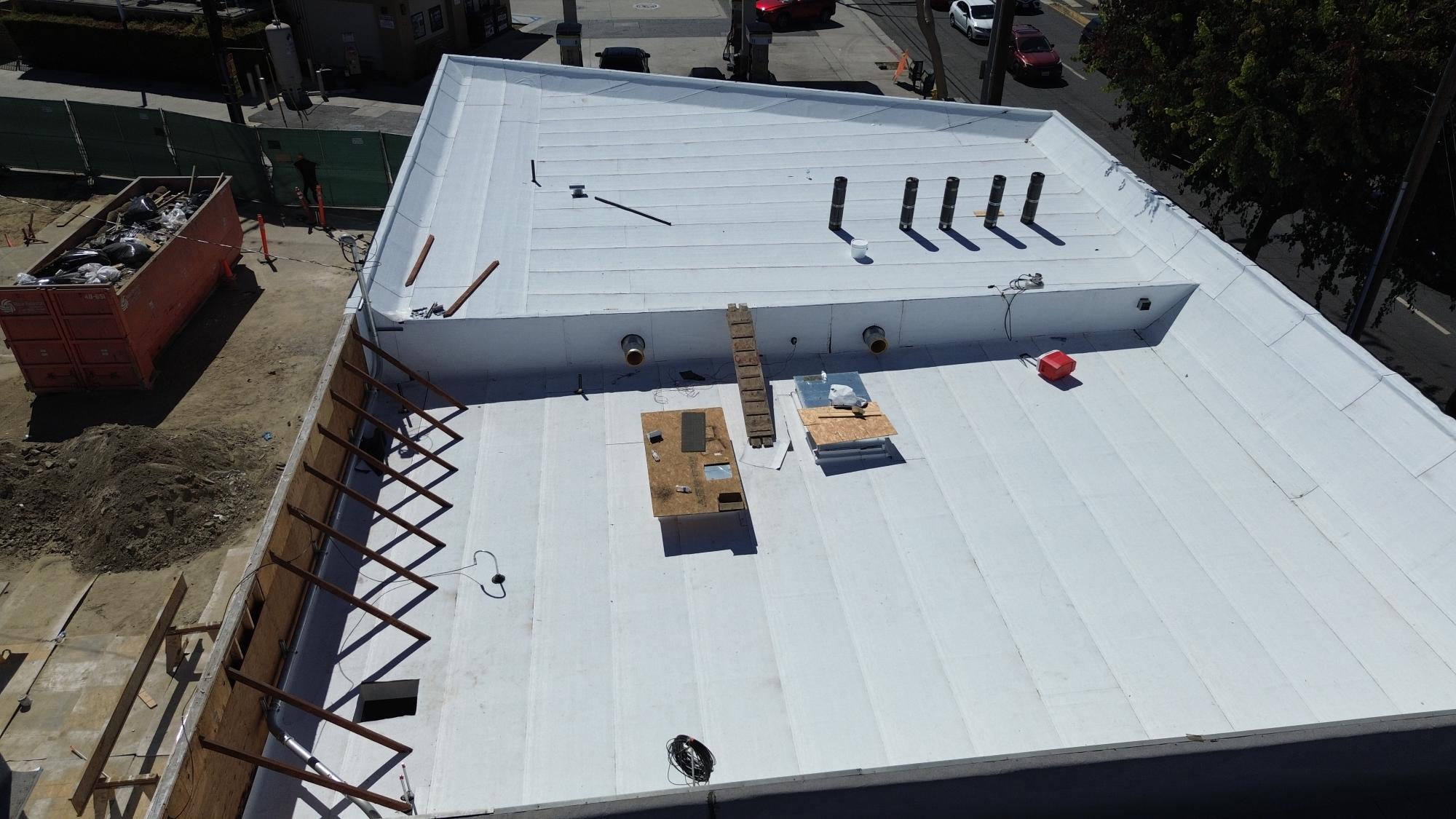Life in Los Angeles feels bright and inviting most days. You see blue skies, tall palm trees, and people on the move. But the same sun and dry air that lift your mood can also be tough on buildings. If you look up at any commercial building, you will find a roof that must deal with heat, sunlight, wind, and more. Roofs do not get a break in Los Angeles.
Being a property owner, manager, or business leader, you want your building to last. You care about the people inside, and you care about long-term value. Los Angeles is famous for surprising weather changes, and your commercial roof faces it all. UV rays, sudden heat, rare but heavy rain, and salty air if you are near the coast make each year a challenge.
Smart choices and regular upkeep can save money and stress. If you know what to look for—and how Los Angeles weather speeds up damage—you can keep your roof working better, longer. Here’s what to know, what to watch, and what steps to take.
Key Climate Factors in Los Angeles Affecting Commercial Roofs
High UV Radiation and Prolonged Sun Exposure
The Los Angeles sun does not hold back. Roofs face strong sunlight most days, all year. This can break down roof materials over time. UV rays make roofing get brittle, crack, and fade. Heat also makes parts expand and shrink as the temperature changes, adding stress.
If the roof material does not resist UV rays well, you may see early wear. Lighter colors or reflective coatings can help bounce sunlight away. Thick, dark roofs can soak up more heat, which may lead to peeling or warping.
If you see any cracks or fading, fix it soon. Sun damage gets worse the longer you wait.
Temperature Swings and Heat Waves
Temperatures in Los Angeles can change a lot from day to night. Summer brings hot spells, but nights often cool down quickly. This up-and-down cycle makes roofing materials swell and shrink. Over time, this causes splits, gaps, and leaks.
Urban areas are often hotter than the countryside, which puts extra stress on your roof. Repeated heat expands roofing parts, while cooler nights tighten them again. If your roof buckles or bubbles, it could be from these swings.
If you notice warped or soft spots, call a specialist. Hidden water may already be getting in.
Irregular Rainfall and Occasional Heavy Storms
Los Angeles often goes weeks without rain. Dust and debris gather on the roof, clogging drains. When rain finally comes, it sometimes comes fast and hard. A slow-draining roof gives water time to leak through small cracks or weaknesses in the roof layer.
Sudden heavy storms also push at the roof. Flash floods and standing water can find or even make new paths into your building. Gutters may fill up fast, and water will sit where it finds a low spot.
Check your drainage often, even when it is dry. Clean gutters keep water from backing up and leaking inside.
Coastal Influence: Salt Air and Humidity
If your business sits near the Pacific Ocean, salt in the air becomes a big concern. Even a gentle sea breeze carries salt with it. Salt lands on the roof and in small spaces, eating away at metal, fasteners, and seams.
Some parts of Los Angeles stay more humid than others. Humid air can make some roof materials soft or sticky. It can also lead to mold or mildew in corners or low spots.
Signs of corrosion or soft materials call for fast action. Replace or patch the damaged sections to stop bigger leaks.
Proactive Roofing Strategies to Extend Lifespan in LA’s Climate
Selecting Climate-Resistant Roofing Materials
Materials matter. Pick roof coverings made for tough sun and strong UV. Roofs labeled as “cool” can reflect heat. Single-ply membranes like TPO or PVC do well against both heat and moisture. Thick rubber roofing or bright roof coatings also hold up better under sunlight.
If you are close to the coast, pick metal roofs that resist rust or use added protection. Ask your roofer about special coatings that reflect sunlight and block UV rays. Less heat soaking in means lower energy bills and less roof stress.
Routine Maintenance and Timely Repairs
- Small cracks or splits
- Blisters or bubbles on the surface
- Faded or peeling sections
- Rust on fasteners or flashings
- Pooling water after rain
Implementing Advanced Drainage Solutions
Do not let dust or grit build up during dry months. Clear off the roof and clean all drainage paths at least twice a year. Use leaf guards or wide gutter outlets so water always has an easy exit. If your building is large or flat, ask your contractor about adding more drains or sloped areas to move water away faster.
Storms dump a lot of rain in a short time. Roofs with slow or blocked drains become pools that damage the structure. Keep a wet vacuum or pumps ready for bigger storms, and always check for water inside the building after heavy rain.
Conclusion
The Los Angeles climate can be hard on commercial roofs. Bright sun, temperature highs and lows, rare but strong rains, and salty air—each one adds wear and shortens a roof’s life. If you own or manage a building here, smart steps keep you ahead of big repairs.
Use strong, sun-resistant materials. Make regular inspections a habit, and fix small problems before they grow. Keep drainage free and clear. These steps help your roof last longer and keep your building safe for everyone inside.
Taking care of your roof means less stress and more peace for your business. Look up, take charge, and protect your investment—Los Angeles style.

